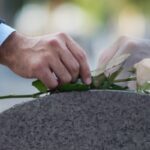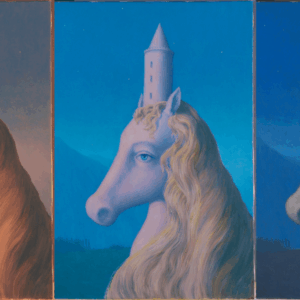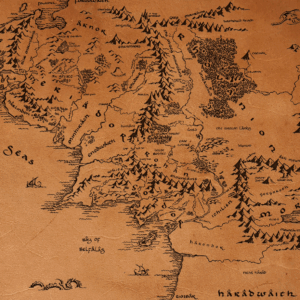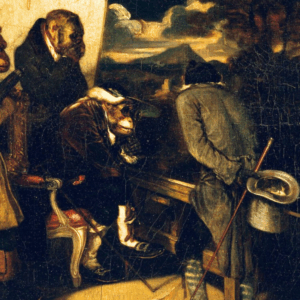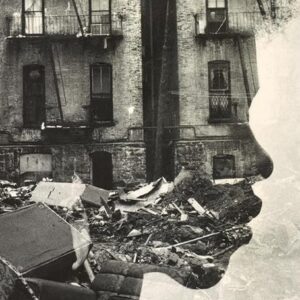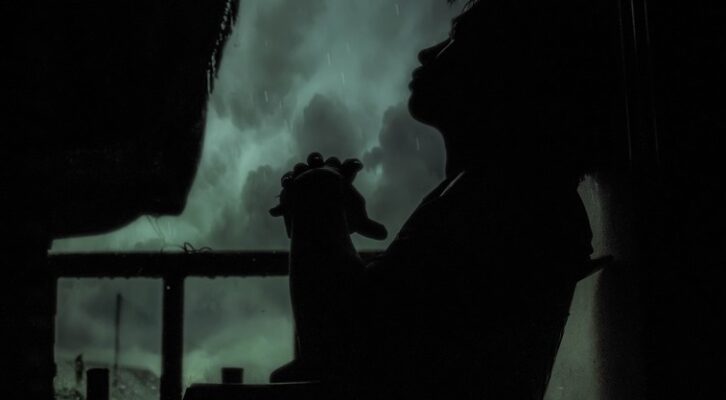
On the Dehumanizing Impact of Deportation and Our Obligations to Each Other
Laurie Sheck Considers the Plight of Refugee Children
Worldlessness, wrote Hannah Arendt, is a “condition of one who shares no things, institutions, or systems of meaning with others.” It is the pained loss of a shared, common world, of mutual care and understanding; an outcome of political exclusion, statelessness, and the experience of being rendered superfluous. It is a state of radical isolation, of being shunned, despised, misunderstood, unseen.
This rupture and its consequences becomes especially vivid and painful in the case of refugee children whose families seek and are denied asylum. In Sweden, since the early 2000s, a strange malady has arisen among large numbers of refugee children whose families have received a negative decision from the Migration Board. Upon learning of their impending deportation, the children become gradually or sometimes suddenly very tired, then fall into a kind of extended sleep that lasts for months and often years. They take to their beds and must be sustained with feeding tubes. Their eyes remain closed, their senses unresponsive. If a piece of ice is run along the child’s naked stomach, it engenders not even the slightest flinch. This condition is called Resignation Syndrome (Uppgivenhetssyndrom).
Although it has been confined so far to Sweden and a few other countries, it speaks to the extremity refugee children face all over the world, and now increasingly in the United States as thousands of children are being deported without legal redress, and often under sudden, confusing, and even violent circumstances.
What occurs is a kind of uroboros of helplessness: the child cannot bear to be conscious in a world that has become a site of radical isolation and refusal.
The syndrome was first recorded and named in 1958 by Dr. Anna-Lisa Annell, who found that almost all of the afflicted children belonged to a persecuted group in their home country and had seen a sibling hurt or a parent raped or tortured. The prospect of being returned ‘home’ was to be sent back to the site of unbearable pain. She likened the children’s reaction to animals’ learned helplessness when all hope for safety has been lost. Exposed to unavoidable shock, dogs, rats, and horses come to see their actions as futile. The result is neural adaptation mixed with behavioral despair.
Once the children are diagnosed, they are sent home with their families who struggle to bring them back to the world—talking and singing to them, massaging and exercising their muscles, easing them into wheelchairs so they can feel the sunlight from the windows. Dr Elisabeth Hultcrantz, who specializes in the syndrome and travels from home to home making house calls, has spoken of placing ice cream on the children’s tongues to remind them of the sweetness of the world. It is not uncommon that months after one child falls ill, a sibling will follow. What occurs is a kind of uroboros of helplessness: the child cannot bear to be conscious in a world that has become a site of radical isolation and refusal, and the parents are helpless to coax the child back. Whatever pact of trust with the world is required to attain just the barest sense of well-being has been shattered. Instead, what is left is fragments of disrupted meaning.
Because the children will generally wake if asylum is granted, some observers have interpreted the syndrome as a form of malingering, but none of the medical literature supports this. Instead, hope is medicinal, it is what enables the child to live. As one expert explains to the parents, “Your child sees the world as so terrible, their unconsciousness is beyond their willpower. The only cure is hope. Hope is the only truth that will wake them.” And when the children do finally wake, their descriptions of what happened to them are haunting: “It was as if I was floating somewhere far away. I heard voices, but I couldn’t move or speak.” “Everything was gray. I didn’t feel hungry or thirsty. I just wanted to sleep and not think about anything.” “I remember my mother crying, but I couldn’t do anything. I wanted to help her but my body wouldn’t move.” One especially vivid description is found in Rachel Aviv’s powerful New Yorker article focusing on Georgi, a Russian refugee child living in Sweden. He likens his experience to being “in a glass box with fragile walls, deep in the ocean.” If he were to speak or even slightly move, this would create a vibration and the glass would shatter, “the water would pour in and kill me.”
Picture the clocks in the Deportation Centers always set to the times of the countries the children are to be sent back to, never to Swedish time. The outer world an enforcing, iron hand. Or picture the comic book the Swedish Migration Board uses to encourage the children to accept and even look forward to their imminent deportation. It features the popular comic book character Banse the Bear who has become the world’s strongest bear by eating a type of honey called “thunder honey” which only he can digest. He is also the kindest bear in the world and his mission is to help people in need. In the comic book for refugee children (who in this case are racoons) Banse helps them see how wonderful deportation is, as they will be returned to their loving families back home and greeted with a festive party and lavish spreads of food. As the child racoons are greeted and hugged at the airport by their relatives the text says, “Welcome home. It has been empty and boring without you.” In truth, most often the children, overwhelmingly members of a minority group in their home country, are being returned to devastation—their relatives having been murdered, disappeared, tortured.
I think of what the astronauts saw, and of the wisdom of that tenderness, and of what Arendt saw, and, in the midst of all that, of all the refugee children asleep or awake.
In her counter-narrative, Refugees Welcome?, the illustrator and storyteller Hayfaa Chalabi offers a graphic novel that revolves around her own difficult experience as a refugee in Sweden and that engages with issues of the misuse of power structures and the intersections of visual culture, gender, and migration. She writes of her book, “I asked myself, how might illustration portray the refugee as a person who experiences oppressive patterns, but also exists as an individual with their own life, story, family, happiness, and–most importantly—dignity.” She depicts herself two ways in the story: one figure is a civic being with hair and clothes while the other is the traumatized self, a dehumanized, elongated, vulnerably naked figure “made only of flesh, blood, and sorrow.” Although she did not suffer from Resignation Syndrome, she writes of the “stomach pain, insomnia, weakness, and fatigue which made me feel pale, exposed, and weak.” In the text, Chalabi recounts her experience before the Migration Board, “The room was full of cameras, all of them watching me…. ‘Can I please ask you a question?’ I said to the clerk. ‘No’ he replied, ‘you have no right to ask questions.’”
In the striking documentary film Wake Up on Mars, the filmmaker Dea Gjinovici chronicles the lives of two sisters suffering from Resignation Syndrome. Ibadeta and Dejeneta, have been asleep for years, and the film follows the family’s daily routines, their hopes and sorrows. Poignantly, the sisters’ brother, Furkan, imagines building a spaceship to Mars so he can take his sisters away from the troubled world they are trapped in and that has caused them to withdraw and close their eyes for years on end.
Hannah Arendt came to her painful insights in the wake of World War II and the devastation of the Holocaust. From varying angles, she saw how oppressive political systems create an isolation that strips the individual of the ability to participate meaningfully in the world, and that this is a form of spiritual violence. The need to be seen, acknowledged and treated with dignity is a fundamental human right and essential to basic well-being. As social creatures, we are dependent on this basic sense of goodness.
How many children are lying in their beds right now, with feeding tubes, unable to wake to the world they have been given? How many will there be tomorrow? The astronauts, when first leaving earth, looked back on their home planet from outer space and saw, in the darkness, a beautiful and vulnerable globe, so small and blue and fragile, undivided by borders or political strife. And they felt an overwhelming tenderness and protectiveness toward their fragile home. I think of what the astronauts saw, and of the wisdom of that tenderness, and of what Arendt saw, and, in the midst of all that, of all the refugee children asleep or awake as I sit at my sunlit window and type these words.
__________________________________

Cyborg Fever by Laurie Sheck is available from Tupelo Press.
Laurie Sheck
Laurie Sheck’s latest novel is Cyborg Fever (June, 2025). Her other books include A Monster’s Notes, long listed for the Dublin International Fiction Prize, and The Willow Grove, a finalist for the Pulitzer Prize. A former fellow at the Cullman Center for Scholars and Writers at the NYPL and at the Radcliffe Institute for Advanced Study, she currently teaches in the MFA program at the New School.












